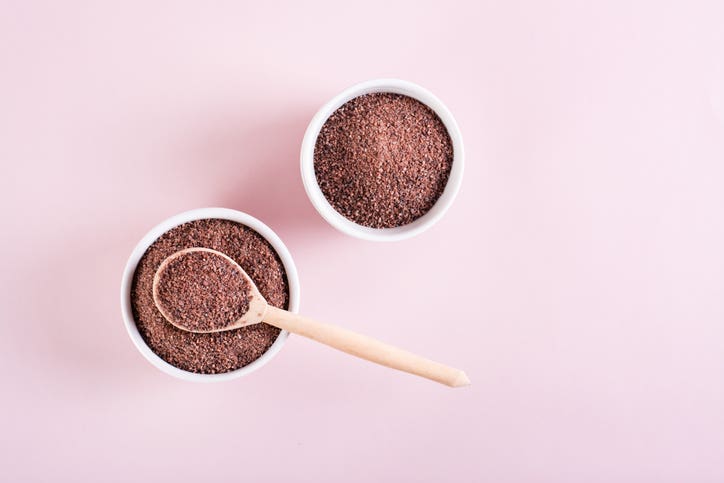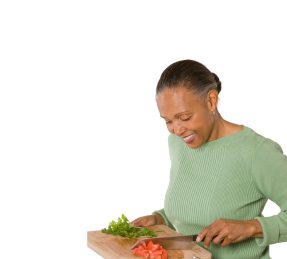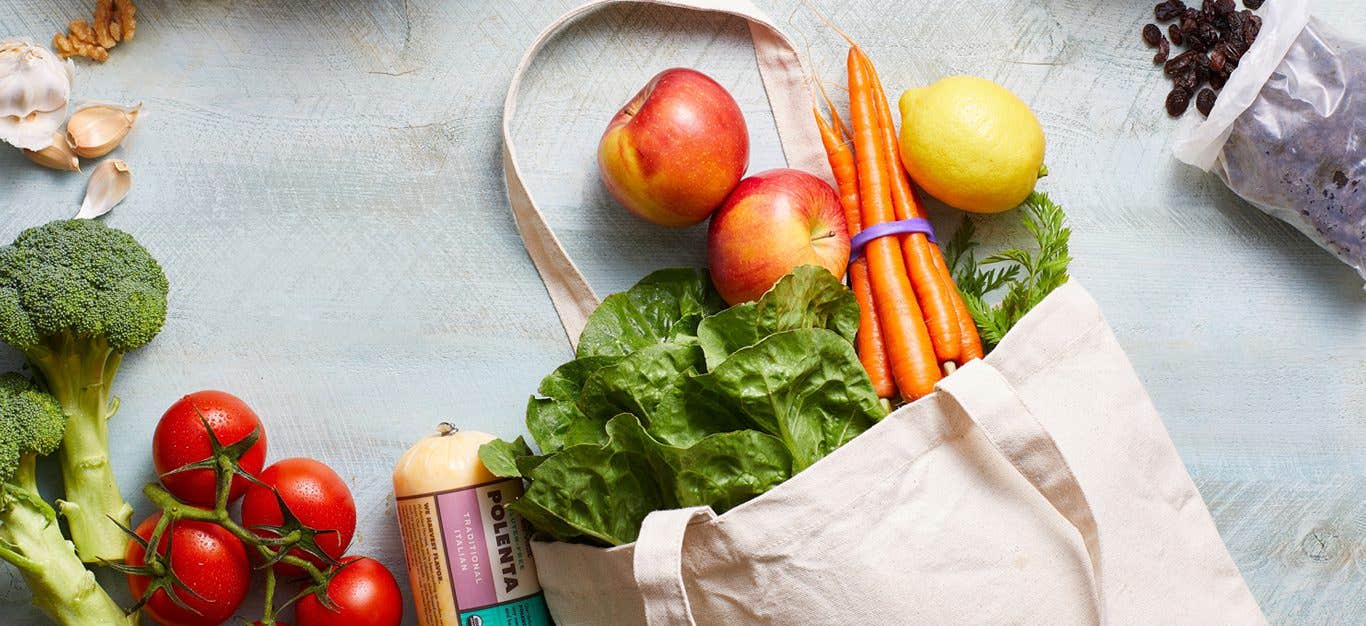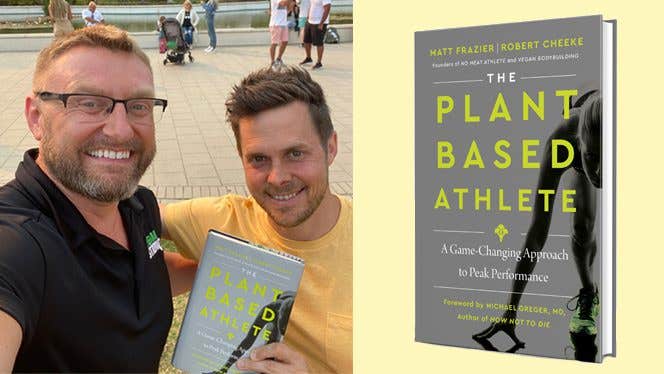Editor's Note: Join Robert Cheeke and Matt Frazier, co-authors of The Plant-Based Athlete, for a free live webinar on July 19 to learn how to eat like a plant-based athlete, the truth about protein, and more. Register here.
I’ve been following a plant-based diet for more than 25 years, and though my nutrition plan has changed and evolved a lot over the years, one consistent theme throughout my decades of plant-based eating has been a foundation of fruits, vegetables, legumes, and grains.
By the time I became plant-based in December 1995, as a sophomore in high school, I was already a five-sport athlete. Today, I work out at the gym about four days a week (primarily weight-training), along with daily dog walks and the occasional hike. For the past 26 consecutive years, I have been a plant-based athlete.
When I became plant-based, as a teenager, I didn’t have a whole lot of variety in my diet, for some obvious reasons, including not having a lot of my own money, not doing my own grocery shopping, and not having discovered many of the foods that I would come to enjoy. When I got into my 20s, I experienced international cuisine for the first time, from Indian to Thai to Ethiopian food, and developed my own preferences for many foods I had never tried until that point. I also got into competitive bodybuilding during my 20s, which had an influence on my nutrition program, too, as I started dabbling in sports supplements, such as protein powders, protein bars, branched chain amino acids, creatine, omega-3 essential fatty acids, and meal replacement shakes.
When I was in my 30s, I had the opportunity to work for the groundbreaking health-focused documentary Forks Over Knives, which dramatically influenced my diet. The experience led me to shift my focus toward whole plant foods, and ultimately it encouraged me to discontinue sports supplements.
After I retired from competitive bodybuilding and embraced long-distance running, my body weight fluctuated quite a bit as I adjusted my calorie intake based on my evolving fitness goals. I haven’t used sports supports or had any particular emphasis on high-protein foods in more than 10 years.
What I Eat Today
Some of my meal plans are idealistic and aspirational, and I don’t always follow them precisely, but the foundation of what I eat on a regular basis is always fruits, vegetables, legumes, and grains, with some nuts and seeds. I like to prepare batches of various staple foods (like rice, potatoes, tofu, etc.) once per week, as I’m able to use these foods for numerous meals. I find that it’s easy to mix up the meals to keep a variety of flavors, even with the same base ingredients.
My Typical Menu
I eat three meals a day, with healthy snacks in between. These days, a sample day of eating might look like this.
Breakfast
- Oatmeal with mixed berries and walnuts
- 1 cup fruit (raspberries, blackberries, watermelon, cherries, or other seasonal fruit)
- 12 ounces water
- Vitamin B12 supplement, vitamin D supplement
I try to eat as many servings of fruit as possible each day, so I like to start strong right when I wake up, eating a cup of fresh fruit on its own and stirring some berries into my oatmeal. Oatmeal is also fiber-rich, which helps keep me full through the morning.
Morning Snack
- 2 bananas with 1 tablespoon peanut butter
- 12 ounces water
Mid-morning, I like to have some more fruit with a little nut butter, to hold me over until lunch.
Lunch
- Burrito bowl (brown rice, black beans, pinto beans, lettuce, tomato, avocado, salsa)
- Small leafy green salad
- 12 ounces water
Burrito bowls are as close to a perfect meal as I can think of. They combine legumes, grains, vegetables, and fruit (avocado) into a nutrient-dense, calorie-sufficient meal that is tasty and satiating. And it’s easy to switch up the ingredients, using up whatever veggies and grains I have on hand. Often I’ll use quinoa in place of brown rice. Sometimes I sprinkle on a little nutritional yeast.
Afternoon Snack
- 1 cup fruit (grapes, pineapple, blueberries, cantaloupe, or strawberries)
Snacking on more fruit after lunch helps me stay hydrated and energized through the afternoon. Berries are my favorite.
Dinner
- Veggie stir-fry (e.g., tofu with brown rice, broccoli, carrots, green beans, mushrooms, snow peas, and zucchini)
- Salad with mixed greens, garbanzo beans (chickpeas), cucumbers, nutritional yeast, and oil-free or low-oil dressing
- 12 ounces water
Like the burrito bowl, the stir-fry offers a highly customizable meal that can take on many flavors, and is a good way to pack in nutrients while using up leftover ingredients. Learn how to stir-fry without oil.
Dessert
- ½ cup frozen mango
- 1 cup cherries
Frozen mango makes for an ultra-sweet, ice cream–like treat and is especially delicious in the summer. And I never grow tired of cherries. If I could eat fresh cherries year round, I probably would.
This is just one sample day of eating, and it didn’t even include one of my favorite foods, which is potatoes, nor did it include lentils, or some other staples, which goes to show how versatile and tasty a plant-based diet can be, providing a wide variety of different types of vitamin- and mineral-rich, high-antioxidant, and high-fiber foods that are good for human health, for animals, and for our planet.
To learn more about a whole-food, plant-based diet, visit our Plant-Based Primer. For meal-planning support, check out Forks Meal Planner, FOK’s easy weekly meal-planning tool to keep you on a healthy plant-based path.

Related News
Get Our Best Price On The Forks Meal Planner

Forks Meal Planner takes the guess work out of making nutritious meals the whole family will enjoy.



